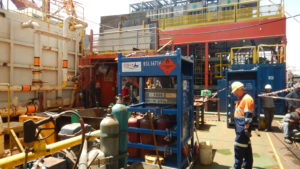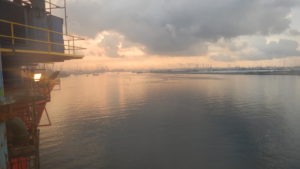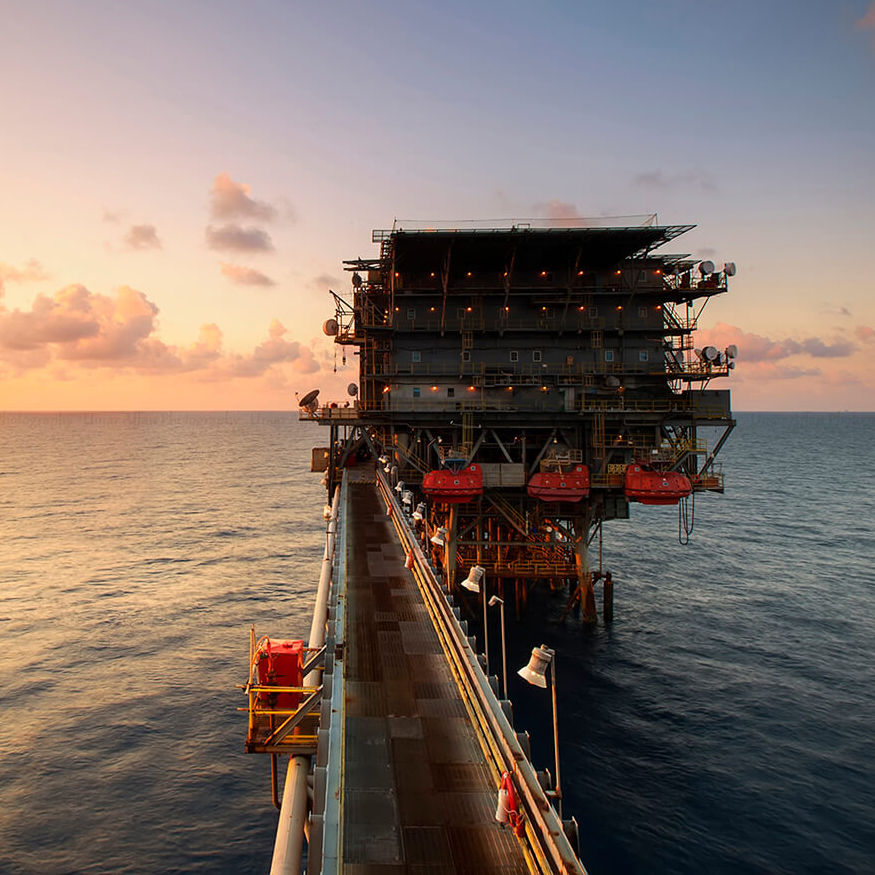Client
Advitech was engaged by Stena Drilling – one of the world’s most prominent independent drilling contractors. The company operates globally from its head office in Aberdeen, Scotland, and runs a fleet of four ultra deep-water drillships and three mid-water semi-submersible drilling rigs. One of its mobile offshore drilling rigs is the Stena Clyde, a UK-registered AKER H3 designed semi-submersible, twin pontoon, column-stabilised platform unit. The vessel was commissioned in 1976, and modified in 1985, 1997 and 2015. It is designed for offshore drilling and gas well-testing operations at water depths up to 2700 metres.
Challenge
Drilling rigs and units are very compact and complex structures, with significant inherent safety risks including potentially explosive atmospheres. The identification and management of hazardous areas is essential to safety on these vessels. Due to the age of the Stena Clyde, and a succession of owners, Stena Drilling did not have complete hazardous area classification documentation for the vessel. It sought assistance to conduct a re-classification of hazardous areas on the rig.
Stena Drilling did not desire a blanket-type hazardous area classification, which is a straightforward classification. Instead, it required individual areas within the vessel to be reviewed and classified appropriately. Consequently, the hazardous area classification relied upon a very careful, systematic understanding of the interrelationship between processes and potential hazards.
Drilling rigs and units are movable structures and rarely stay at the same location for long periods of time. Consequently, the classification had to consider variable environmental conditions, such as temperature and solar radiation, as well as differing regulations in the anticipated geographical locations in which the drilling rig may operate.
The method to undertake a hazardous area classification is usually fairly streamlined. However in this instance, the application of standard guidelines to classify hazardous areas was challenged by the hierarchical constraints of varying international and industry-specific regulations and guidelines.
Given the immediate operation of the rig within Australia maritime waters, Stena deferred to an Australian company to provide a hazardous area classification. It required the study to be completed within a tight timeframe, in order to obtain necessary contract work permits.
Solution
Advitech was invited to undertake the hazardous area classification of the Stena Clyde. Stena Drilling selected us because of our extensive process engineering and hazardous area classification experience. Advitech’s approach was proactive from the start, with a site visit to the drilling rig while it was in Singapore undergoing maintenance work. To ensure a high quality of work and understanding of drilling processes, two of our highly experienced process engineers attended site activities and client consultations.
The method for applying various hazardous area classification standards was agreed early in the project. After consultation with Stena Drilling staff, it was agreed that four core standards relating to hazardous area classification would be applied – one international, two industry-specific, and one Australian.
The site inspection took place over several days, and included face-to-face consultations with all operation managers on the rig. In many instances, site experiences enabled our engineers to make more accurate determinations of hazardous areas. In some case, this minimised or removed regulatory equipment protection in certain locations of the drilling rig.
We quickly analysed on-board information and assertively pursued gaps with the objective of closing-out issues before disembarking. Advitech’s strong process engineering knowledge enabled a timely review of technical data, especially PIDs. After inspections were completed, we used the information obtained to complete the assessment and prepare a report incorporating full details of the hazardous area classification and recommended actions.
Outcome
A hands-on practical approach offered the most effective way to identify and assess all 50 hazardous locations on-board the Stena Clyde. Consultation with the client proved invaluable as its operational experiences provided insightful evidence of emission sources and frequency. These characteristics are a crucial input into hazardous area classification and accompanying drawings.
Working closely with the client post site visit, the report and drawings were completed in a timely fashion and within budget. The result of our work was a document that Stena Clyde could confidently use as a reference document for the specification and design of electrical equipment within hazardous areas.


